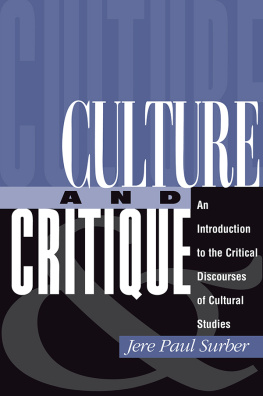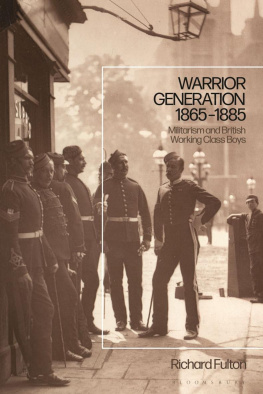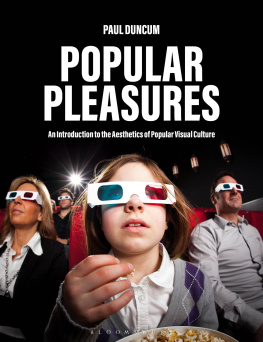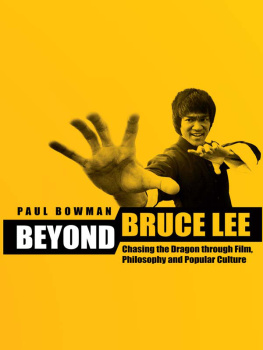
PROFANE CULTURE
PROFANE CULTURE
WITH A NEW PREFACE BY THE AUTHOR
PAUL E. WILLIS
PRINCETON UNIVERSITY PRESS
Princeton & Oxford
Published by Princeton University Press,
41 William Street, Princeton, New Jersey 08540
In the United Kingdom: Princeton University Press,
6 Oxford Street, Woodstock, Oxfordshire OX20 1TW
Originally published in 1978 by Routledge & Kegan Paul Ltd. of London and Boston. copyright Paul E. Willis.
This paperback edition, including the new preface by the author, is copyright 2014 by Princeton University Press
press.princeton.edu
White Rabbit (page 213)
Words and music by Grace Slick
Copyright 1966 by IRVING MUSIC, INC.
Copyright Renewed
All Rights Reserved. Used by Permission
Reprinted by permission of Hal Leonard Corporation
Jacket art: Motorcyle photograph James Mann (www.jamesmann.com).
Tie-dye image Brad Garrett
All Rights Reserved
Library of Congress Cataloging-in-Publication Data
Willis, Paul E.
Profane culture / Paul E. Willis ; with a new preface by the author.
pages cm
Includes bibliographical references and index.
ISBN 9780691163697 (pbk.)
1. HippiesEngland. 2. MotorcyclistsEngland. 3. Popular cultureEngland.
4. SubcultureEngland. I. Title.
HQ799.G72E58 2014
305.5'680942dc23
2014010055
British Library Cataloging-in-Publication Data is available
This book has been composed in Sabon Next LT Pro and Neutraface No. 2
Printed on acid-free paper.
Printed in the United States of America
10 9 8 7 6 5 4 3 2 1
TO JOE AND LES
music alone awakens in man the sense of music. The forming of the five senses is a labour of the entire history of the world down to the present.
KARL MARX
Economic and Philosophic Manuscripts, 1844
CONTENTS
MOMENTS
PREFACE TO THE 2014 EDITION
SPRING 1969
Birmingham, England
Chromium-plated double exhaust pipes and high exuberant mudguards all helped to give the bikes an exaggerated look of fierce power. It was also common practice to remove the baffles from the silencer box on the exhaust, in order to allow the straight-through thumping of the exhaust gases from the cylinder to carry their explosion directly into the atmosphere. The effect could be startling. The breathy, loud slightly irregular bang and splutter brought the hardness and power of the metal piston exploding down the metal cylinder, abruptly and inevitably reversing up again, right out into the still air. The minutely engineered turn of the crankshaft brought a power and impersonal ferocity right out into the vulnerable zone of human sensibilities.
An alleyway led up the side of the church to the coffee bar of the club. Members often parked their bikes along this narrow passageway, and stood by them talking, starting and revving their bikes, discussing technical matters or indeed any matters at all. The noise was often overwhelming: the loud thumping of the motor-bike engines seemed to promise sudden movement and action, but none came. Strangers and neophytes could be unnerved by the continually imagined necessity to take evasive action against some fantasy explosion of movement and aggression.
The ensemble of bike, noise, rider, clothes on the move gave a formidable expression of identity to the culture and powerfully developed many of its central values.
(PAGES 7576, BELOW)
12.20 PM, MAY 18TH, 2014
West Village, Manhattan
The settled bourgeois air of Greenwich Village is rent. A deafening roar roots me to a spot on the corner of Bleecker and Bank as at least a hundred bikes come off Hudson, some streaming some picking their way around shiny cars in the sunshine. They are making a turn in front of me into Bank. Shoppers and strollers look around startled, they stop and stare. An old-looking bike splutters to a stop, the rider dismounts to frantically kick start the engine without success. The traffic is snarled, gets clogged; the bikes stop and start, shuffling forward with barely baffled thumps, cracklings, snarls, rumbles and bangs. I keep counting as the bikes snake by, defying stillness, squeezing through small spaces as otherwise fearsome SUVs creep to the side. Thoughts of a cupcake at the Magnolia Bakery on the next corner give way to memories of widespread recent news reports of a violent biker swarm incident with a motorist. Triumphs, Hondas, Harleys, some veteran, some new, all shapes and sizes of handlebar including many cattle horns. It becomes a spectacle. Several deep on the sidewalk, onlookers wear various expressions from fear to fascination, surrogates for social attitudes far more revealing than any survey. A rider stands bolt upright on his footrests peering at and over the bystanders as he navigates through the seemingly highly precariously snarled cars. A pungent smell of petrol hangs in the air long after the last thumps fade into the distance. The suddenly vulnerable stranded biker kneels by his machine, toolbox open.
:
The beating of Alexian Lien took place on September 29, 2013 on New York Citys Henry Hudson Parkway in an altercation between Lien and motorcyclists participating in a rally called Hollywoods Block Party. One of the bikers pulled in front of Lien and slowed dramatically, an action sometimes referred to as brake checking. Lien stopped his vehicle and was quickly surrounded by bikers. Lien accelerated to escape and struck one of the bikers, critically injuring him. A chase ensued, ending in Lien being pulled from his vehicle and beaten.
This book captures moments from nearly fifty years ago in Birmingham England during the fomenting years of countercultural upheaval in England in the late 1960s and early 1970s. I am delighted to see this ethnography and analysis of the hippy and bike cultures re-published now by Princeton University Press. So long between moments now and then though. How does this book matter now, to this moment?
Well, ethnographically and phenomenologically speaking, does it matter when moments are captured? Does it really matter what the distance is between moments; between moments of capture and of reading and rereading? I say, No! For many purposes it does not. The crucial ingredients of ethnographynowness, thereness, immediacy and the poignancy of human experience, captured somehowin many ways transcend the boundaries of time and place. This is part of what defines what it is to be human: sentient, fearing, thinking, precarious. Not timeliness but capturing this is the hard thing. This is a report from the front line nearly fifty years ago. But what was true then is true now; the same is true of all moments of experienceyou can hear the voices and cries, feel the air, smell the burning before the ashes, fear the fire. There is an openness about what happens next, only drily recorded later as inevitable outcomes by structural theorists of one kind or another.
Despite recent turns against it in ethnography critique, there really is something of an eternal present in the way humans experience the world; a lived track of continuity always bumping over sleepers, now, now, now. Of course the track may be switched by history but is only ever lived through a succession of nows, moments felt and understood as experience, which cannot be reduced to underlying and constituent forces or banished to condescending parentheses or colourful footnotes in social/structural accounts. Long view, macro and structural accounts may offer good and necessary historical and contemporary record but they are not really often of
Next page






